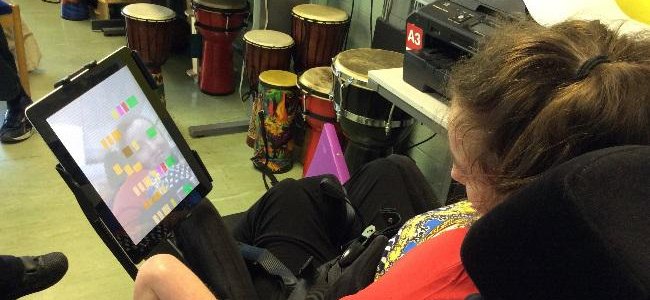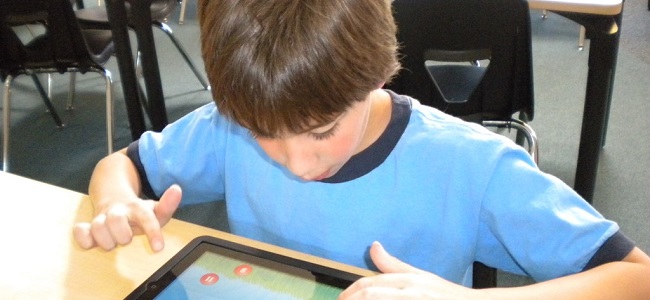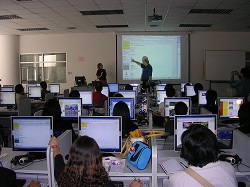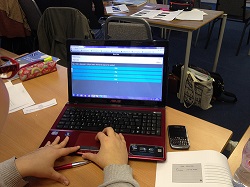It seems, at times, that SEN teaching might well be the most rewarding area of education. Some of these pupils have immense obstacles to overcome as part of their learning, and specialist teachers are always finding new and inventive ways to assist them. Carolyn Hughes, ICT leader at Meadowside Special School in Birkenhead, Merseyside, discusses the technological options available for making as many areas as SEN-accessible as possible.

Technology has a great role to play in improving access for learners with physical barriers to learning. For many with additional SEN, the assistive technology can be challenging itself; trying to make it personalised to the individual learner, to make is usable and purposeful. It should be asked, “What do we want the learners to do that they cannot do without assistive technology?”
Children have been using screens in school for ages. However, today’s teachers are able to really take advantages of mobile devices, with many schools fully embracing 1:1 learning. Los Angelean journalist Tara Heath takes a look at how teachers can work with parents in order to help find the right balance when it comes to screen time.

It's not a secret that many of your students spend a lot of time watching television or playing games. The newest apps are prime conversation at lunch, and the latest downloadable content is the talk of the playground. Football can become a distant memory when someone mentions Minecraft.
Both teaching and marking can take up a huge amount of a teacher’s day; the latter, in particular, especially tends to eat into supposed ‘free time’. Here, Manchester-based primary school teacher and blogger Amy Kingsley discusses one app that’s been invaluable for her literacy lessons.

Over the last academic year, Explain Everything has fast become one of my top educational apps for applying pupils’ speaking and listening skills across the curriculum. As a busy primary school teacher, I have never been an avid fan of the daily marking marathon and would much rather spend my time planning engaging lessons and creating resources.
Different teachers have different ideas when it comes to innovation in education. Here, The Learning Machine’s Ian Lynch explains why he feels schools need to be careful not to get carried away with technology.

Modern edtech advancements are getting lots of use in STEM subjects, as well as the likes of English and the performing arts, but how is PE getting the most out of this technology? Brian Bennett, a teacher turned academic customer solutions engineer at TechSmith, discusses how video tutorials are being used alongside the whistle.

Keeping students engaged during lesson time is one of the greatest and oldest challenges for any educator. To boost student motivation and engagement, teaching methods are having to evolve and move away from traditional approaches within the classroom. One notable development has been the introduction of technology. Most subjects are incorporating digital resources in order to harness young people’s interest in technology. For example, physical education classes are incorporating mobile technology as a means of improving class involvement and enthusiasm.
Twitter is an indispensable aspect of many people’s working lives. As such, it’s good to know whom to follow. A follow-up to April’s 30 great British education-innovators to follow on Twitter article, here are 30 more suggested educators to follow!

This is a list of 30 recommended education-oriented Twitter feeds. Note: this is by no means a ‘best-of’, and the order is unimportant. The list is comprised of suggestions from the public and our own choices.
After Rory Gallagher’s recent piece on the meaning of education-innovation, Nicole Ponsford looks at the current state of affairs between schools and suppliers, and how both parties can work together for exciting progress.

With a background in marketing preceding my time in schools, I find this question of great interest. Schools and business are in the marketing game – schools to illustrate and celebrate the hard work and success of students and teachers alike, businesses to illustrate how innovative they also are, and to make a profit. As a former multimedia teacher, I have always been keen to provide my secondary school students with ‘industry-standard’ software and hardware. I want to prepare them for the world of business. However, working with technological giants like Apple, Sony and Vodafone, I have learnt a little about who is leading this innovation in terms of produce use – teachers or suppliers? Who is making the first move, and is this more about products or partnership?
There are amazing innovations being implemented into schools daily, but what are the downsides of this? As with Elliot Simmonds' piece on Friday, Shiny Things director Mat Peterson has some concerns about the expansion of edtech - namely, the lack of physical actions that these modernisations require.

While the use of devices in one-to-one classrooms is hugely beneficial to education, the potential impacts of abandoning handwriting in favour of keyboards have largely been overlooked. Early formative years are essential for sensorimotor development and a complete shift to computer-based teaching could be detrimental to a child’s learning.
New research from the Stanford University School of Medicine shows that areas of the human brain do become specialised for the specific recognition of numerals. Meanwhile, several studies have shown that the human brain's specialised ability to recognise letters and numbers is strengthened by sensorimotor experiences with those characters, specifically through handwriting practice.
Many of you will be looking to integrate more technology in your classroom this new academic year, but unsure at what software and apps to actually go for. Here is a list of Mark Anderson's top free edtech tools for assessment, recording and sharing video and audio, creating posters and presenting learning.

E-learning or using technology to support learning comes in many different shapes and sizes.
I’m always being asked to give advice and ideas on different online tools or iPad apps that can help with learning in the classroom. It’s always a challenge to balance the needs of the activity, with the skills of the learners and often too the greater challenge is to raise the confidence of the teachers.
I often hear from teachers about how they want to achieve more effective learning using technology, but often don’t have the software resources to achieve them, which is often due to finances. This article aims to give you my top free online tools to support learning in the classroom.
Photo credit: Danny Nicholson

A community-driven platform for showcasing the latest innovations and voices in schools
Pioneer House
North Road
Ellesmere Port
CH65 1AD
United Kingdom